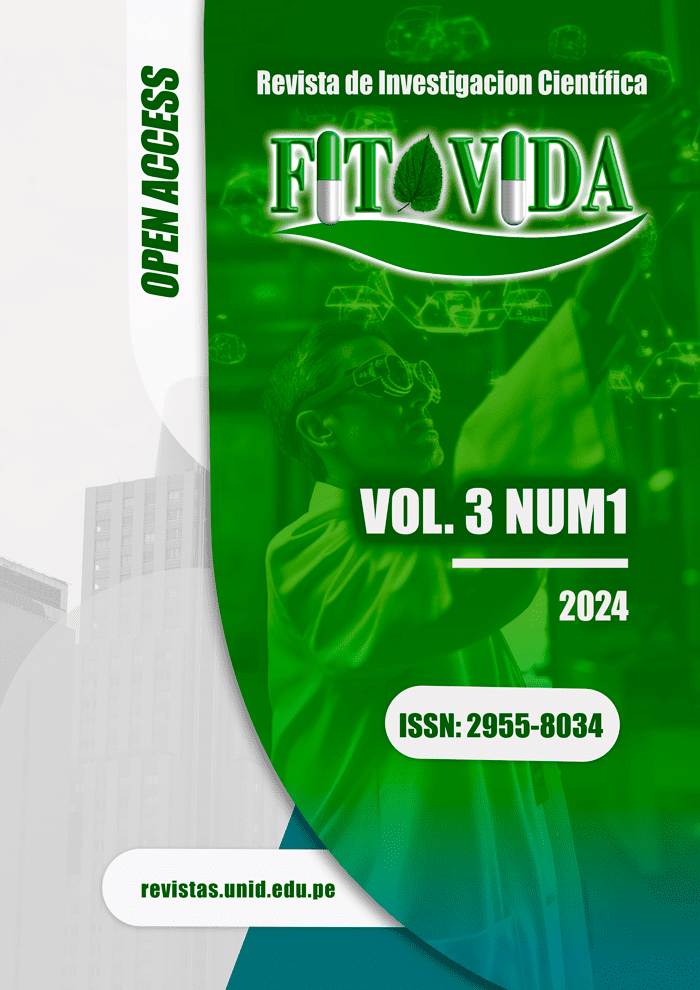Abstract
Wood is an essential natural resource, but its durability is threatened by xylophagous fungi such as Chlorociboria aeruginosa and Captivating Cluster Funnel. This study aims to structurally analyze Persea americana (palto) wood affected by these fungi, evaluating their effects on physical and mechanical properties. The research was carried out in Ahuaycha, Huancavelica, in the General Studies laboratory of the National Autonomous University of Tayacaja. Samples of affected wood were collected, which were subjected to a process of cutting, staining and microscopic analysis. The results indicate that Captivating Cluster Funnel causes severe deterioration, manifesting in a dark brown coloration and a significant decrease in structural strength. In contrast, Chlorociboria aeruginosa presents a moderate impact, with a blue-green coloration and a more localized effect on the surface layers of the wood. The findings underline the importance of implementing monitoring and control strategies to mitigate the damage caused by these fungi, as well as the need for advanced detection methods to preserve wood quality in various industries.
References
Bautista Prado, C. I. (2024). Caracterización morfológica y estandarización de protocolo para la identificación molecular de géneros de hongos fitopatógenos en palto (Persea americana Mill.), La Mar-Ayacucho. https://repositorio.unsch.edu.pe/items/d89f8fde-18a5-497e-9f08-b7d876db180c
Bejarano-Bolívar, A. A., Lamelas, A., von Wobeser, E. A., SánchezRangel, D., Méndez-Bravo, A., Eskalen, A., & Reverchon, F. (2021). Shifts in the structure of rhizosphere bacterial communities of avocado after Fusarium dieback. Rhizosphere, 18, 100333. https://doi.org/10.1016/j.rhisph.2021.100333
Callaghan, S., Carnegie, A. J., Gillespie, P., Mulholland, S., Nagel, M., Sargeant, D., ... & Wildman, O. (2024). Response to the detection of Fusarium dieback associated with ambrosia beetles on Acer negundo in New South Wales. Australasian plant pathology, 53(4), 345-352. https://doi.org/10.1007/s13313- 024-00984-6
Foglia, R. C. (2005). Conceptos básicos sobre el secado de la madera. Revista Forestal Mesoamericana Kurú, 2(5), 88-92. https://dialnet.unirioja.es/servlet/articulo?codigo=5123396
González, V., & Icochea, T. (1980). Pudrición de la madera de diez especies forestales por acción de cinco hongos xilófagos. Revista Forestal del Perú, 10(1-2), 1-38. http://cedinfor.lamolina.edu.pe/Articulos_RFP/Vol10_no1-2_80-81_(14)/vol10_art4.pdf
Gregorio Olalde-Lira, G., Raya Montano, Y. A., Apaez Barrios, P., Vargas-Sandoval, M., Pedraza Santos, M. E., Raymundo & Nieves Lara-Chavez, M. B. (2020). Characterization of Fusarium spp., a Phytopathogen of avocado (Persea americana Miller var. drymifolia (Schltdl. and Cham.)) in Michoacan, Mexico. Revista de la facultad de ciencias agrarias, 52(2), 301-316.
Montañez Orozco, I., Vargas Sarmiento, C., Cabezas Gutiérrez, M., & Cuervo Andrade, J. (2010). Colonización micorricica en plantas de aguacate (Persea americana L.). Revista UDCA Actualidad & Divulgación Científica, 13(2), 51-60. http://www.scielo.org.co/scielo.php?pid=S012342262010000200007&script=sci_arttext
Olalde-Lira, G. G., Raya Montaño, Y. A., Apáez Barrios, P., VargasSandoval, M., Pedraza Santos, M. E., Raymundo, T., ... & Blanca, M. (2020). Caracterización de Fusarium spp., fitopatógeno de aguacate (Persea americana Miller var. drymifolia (Schltdl. y Cham.)) en Michoacán, México. Revista de la Facultad de Ciencias Agrarias. Rev. FCA UNCUYO, 52(2), 301-316.
Tamayo y Tamayo, M. (2003). El proceso de la investigación científica (4ta ed.). México, D. F: Editorial Limusa S.A.
Valencia, A. L., Saavedra-Torrico, J., Rosales, I. M., Mártiz, J., Retamales, A., Link, A., & Gil, P. M. (2022). Unveiling the predisposing factors for the development of branch canker and dieback in avocado: a case of study in Chilean orchards. Horticulturae, 8(12). https://doi.org/10.3390/horticulturae8121121
Vega Gutiérrez, SM (2016). Hongos de spalillado: identificación genética, interacciones materiales y características microscópicas de pigmentos extraídos. https://ir.library.oregonstate.edu/concern/graduate_thesis_or_dissertations/fj236557c

This work is licensed under a Creative Commons Attribution-NonCommercial 4.0 International License.
Copyright (c) 2024 Elyane Estefany Belito Huamani, Susan Karina Montes Bujaico , Misael Montes Bujaico, Deyvid Cruz Ventura, Fredy Quintana Uscamayta






